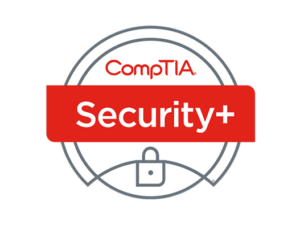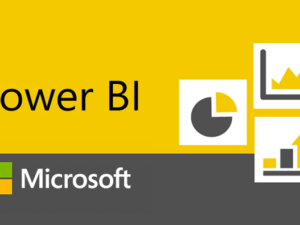CND is a vendor-neutral, lab intensive, and skill-based network security certification training course based on the cybersecurity education structure by National Initiative of Cybersecurity Education(NICE).The online CND training and certification course covers protect, identify, and respond approach to network security , and an arsenal of tools to provide real-world experience on current network security methodologies.You will learn network defense concepts, application of security protocols, firewall configuration, and many more to foster flexibility of operations during attacks.
CND-Certified Network Defender course
Instructor
Mike
- Description
- Curriculum
- FAQ
- Reviews

A CND certified individual will be able to:
- Understand computer network and defense fundamentals
- Know the network security threats, attacks, controls, protocols, and devices
- Design and implement a network security policy
- Grasp a firm grip on physical and host securities
- Learn about secure firewall, VPN, and IDS configuration and management
- Monitor and analyze network traffic
- Comprehend wireless network defense
- Backup and recover data
- Speculate and manage network risks and vulnerabilities
The course is designed for:
- Network Administrators
- Network security Administrators
- Network Security Engineer
- Network Defense Technicians
- CND Analyst
- Security Analyst
- Security Operator
-
1Module 01: Computer Network and Defense Fundamentals
- Network Fundamentals
- Network Components
- TCP/IP Networking Basics
- TCP/IP Protocol Stack
- IP Addressing
- Computer Network Defense (CND)
- CND Triad
- CND Process
- CND Actions
- CND Approaches
-
2Module 02: Network Security Threats, Vulnerabilities, and Attacks
- Essential Terminologies
- Network Security Concerns
- Network Security Vulnerabilities
- Network Reconnaissance Attacks
- Network Access Attacks
- Denial of Service (DoS) Attacks
- Distributed Denial-of-Service Attack (DDoS)
- Malware Attacks
-
3Module 03: Network Security Controls, Protocols, and Devices
- Fundamental Elements of Network Security
- Network Security Controls
- User Identification, Authentication, Authorization and Accounting
- Types of Authorization Systems
- Authorization Principles
- Cryptography
- Security Policy
- Network Security Devices
- Network Security Protocols
-
4Module 04: Network Security Policy Design and Implementation
- What is Security Policy?
- Internet Access Policies
- Acceptable-Use Policy
- User-Account Policy
- Remote-Access Policy
- Information-Protection Policy
- Firewall-Management Policy
- Special-Access Policy
- Network-Connection Policy
- Business-Partner Policy
- Email Security Policy
- Passwords Policy
- Physical Security Policy
- Information System Security Policy
- Bring Your Own Devices (BYOD) Policy
- Software/Application Security Policy
- Data Backup Policy
- Confidential Data Policy
- Data Classification Policy
- Internet Usage Policies
- Server Policy
- Wireless Network Policy
- Incidence Response Plan (IRP)
- User Access Control Policy
- Switch Security Policy
- Intrusion Detection and Prevention (IDS/IPS) Policy
- Personal Device Usage Policy
- Encryption Policy
- Router Policy
- Security Policy Training and Awareness
- ISO Information Security Standards
- Payment Card Industry Data Security Standard (PCI-DSS)
- Health Insurance Portability and Accountability Act (HIPAA)
- Information Security Acts: Sarbanes Oxley Act (SOX)
- Information Security Acts: Gramm-Leach-Bliley Act (GLBA)
- Information Security Acts: The Digital Millennium Copyright Act (DMCA) and Federal Information Security Management Act (FISMA)
- Other Information Security Acts and Laws
-
5Module 05: Physical Security
- Physical Security
- Access Control Authentication Techniques
- Physical Security Controls
- Other Physical Security Measures
- Workplace Security
- Personnel Security: Managing Staff Hiring and Leaving Process
- Laptop Security Tool: EXO5
- Environmental Controls
- Physical Security: Awareness /Training
- Physical Security Checklists
-
6Module 06: Host Security
- Host Security
- OS Security
- Linux Security
- Securing Network Servers
- Hardening Routers and Switches
- Application/software Security
- Data Security
- Virtualization Security
-
7Module 07: Secure Firewall Configuration and Management
- Firewalls and Concerns
- What Firewalls Does?
- What should you not Ignore?: Firewall Limitations
- How Does a Firewall Work?
- Firewall Rules
- Types of Firewalls
- Firewall Technologies
- Firewall Topologies
- Firewall Rule Set & Policies
- Firewall Implementation
- Firewall Administration
- Firewall Logging and Auditing
- Firewall Anti-evasion Techniques
- Why Firewalls are Bypassed?
- Full Data Traffic Normalization
- Data Stream-based Inspection
- Vulnerability-based Detection and Blocking
- Firewall Security Recommendations and Best Practices
- Firewall Security Auditing Tools
-
8Module 08: Secure IDS Configuration and Management
- Intrusions and IDPS
- IDS
- Types of IDS Implementation
- IDS Deployment Strategies
- Types of IDS Alerts
- IPS
- IDPS Product Selection Considerations
- IDS Counterparts
-
9Module 09: Secure VPN Configuration and Management
- Understanding Virtual Private Network (VPN)
- How VPN works?
- Why to Establish VPN ?
- VPN Components
- VPN Concentrators
- Types of VPN
- VPN Categories
- Selecting Appropriate VPN
- VPN Core Functions
- VPN Technologies
- VPN Topologies
- Common VPN Flaws
- VPN Security
- Quality Of Service and Performance in VPNs
-
10Module 10: Wireless Network Defense
- Wireless Terminologies
- Wireless Networks
- Wireless Standard
- Wireless Topologies
- Typical Use of Wireless Networks
- Components of Wireless Network
- WEP (Wired Equivalent Privacy) Encryption
- WPA (Wi-Fi Protected Access) Encryption
- WPA2 Encryption
- WEP vs. WPA vs. WPA2
- Wi-Fi Authentication Method
- Wi-Fi Authentication Process Using a Centralized Authentication Server
- Wireless Network Threats
- Bluetooth Threats
- Wireless Network Security
- Wi-Fi Discovery Tools
- Locating Rogue Access points
- Protecting from Denial-of-Service Attacks: Interference
- Assessing Wireless Network Security
- Wi-Fi Security Auditing Tool: AirMagnet WiFi Analyzer
- WPA Security Assessment Tool
- Wi-Fi Vulnerability Scanning Tools
- Deploying Wireless IDS (WIDS) and Wireless IPS (WIPS)
- WIPS Tool
- Configuring Security on Wireless Routers
- Additional Wireless Network Security Guidelines
-
11Module 11: Network Traffic Monitoring and Analysis
- Network Traffic Monitoring and Analysis(Introduction)
- Network Monitoring: Positioning your Machine at Appropriate Location
- Network Traffic Signatures
- Packet Sniffer: Wireshark
- Detecting OS Fingerprinting Attempts
- Detecting PING Sweep Attempt
- Detecting ARP Sweep/ ARP Scan Attempt
- Detecting TCP Scan Attempt
- Detecting SYN/FIN DDOS Attempt
- Detecting UDP Scan Attempt
- Detecting Password Cracking Attempts
- Detecting FTP Password Cracking Attempts
- Detecting Sniffing (MITM) Attempts
- Detecting the Mac Flooding Attempt
- Detecting the ARP Poisoning Attempt
- Additional Packet Sniffing Tools
- Network Monitoring and Analysis
- Bandwidth Monitoring
-
12Module 12: Network Risk and Vulnerability Management
- What is Risk?
- Risk Levels
- Risk Matrix
- Key Risk Indicators(KRI)
- Risk Management Phase
- Enterprise Network Risk Management
- Vulnerability Management
-
13Module 13: Data Backup and Recovery
- Introduction to Data Backup
- RAID (Redundant Array Of Independent Disks) Technology
- Storage Area Network (SAN)
- Network Attached Storage (NAS)
- Selecting Appropriate Backup Method
- Choosing the Right Location for Backup
- Backup Types
- Conducting Recovery Drill Test
- Data Recovery
- Windows Data Recovery Tool
- RAID Data Recovery Services
- SAN Data Recovery Software
- NAS Data Recovery Services
-
14Module 14: Network Incident Response and Management
- Incident Handling and Response
- Incident Response Team Members: Roles and Responsibilities
- First Responder
- Incident Handling and Response Process
- Overview of IH&R Process Flow
How do I become a Certified Network Defender (CND)?
Upon successful completion of the third-party exam, attendees will obtain their EC-Council CND Certification.
How do I take the EC-Council Certified Network Defender exam?
Taken via EC-Council Exam Portal and ProctorU; formally called EC-Council Network Security Administrators (ENSA).
Please, login to leave a review







